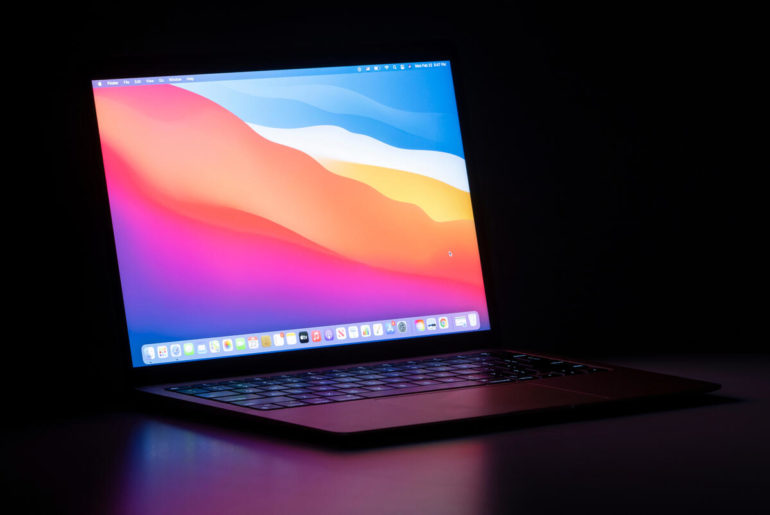Could the MacBook’s physical keyboard be replaced by a second screen?
By Tada Images shutterstock
Apple has secured the rights from the US Patent and Trademark Office for a dual-display MacBook, in what could either be an echo of an old battle with Microsoft Windows and Google Chrome OS, or the future of laptops.
According to Patently Apple, the patent covers an Apple-designed dual-display laptop that swaps out the keyboard for a virtual one that’s not unlike the keyboard on an iPad, but with multiple possible layouts to support different use cases, such as work and gaming.
It depicts a device featuring biometric sensors, a fingerprint sensor, and a wireless charger.
While it’s just a patent and doesn’t necessarily suggest Apple will manufacture such a product, it raises the possibility of touch features from the iPhone and iPad, or even the expensive camera setup in the iPhone 12 that supports Face ID, being brought across to the MacBook.
One interesting prospect is that the MacBook becomes a wireless charger for other iOS-based devices, such as the iPhone and Apple Watch, which is also detailed in the granted patent.
Dual-screen duels
Three years ago, Microsoft’s hardware team made a rare move by exposing its Centaurus dual-screen prototype laptop just in time for Apple’s WWDC conference.
Meanwhile, Apple was filing a new patent for a dual-screen MacBook that switched out the keyboard for a touch interface with soft buttons that would avoid its disastrous post-2015 butterfly switch keyboards.
Three years on, Microsoft has ditched Windows 10X — originally slated for dual-screen devices like the Surface Neo on new chips — and is forging ahead with Windows 11 for single-screen laptops, while Apple is midway through switching from Intel chips on Macs to its own Arm-based silicon.
Separately, Apple was granted two patents earlier this year that detailed a MacBook with built-in reverse-charging coils that can wirelessly charge an iPhone, iPad or Apple Watch. That would allow Apple customers to avoid carrying cumbersome wireless charging plates and reduce the number of cables needed when travelling.
A MacBook as a wireless charger could be a significant engineering and product feat to overcome though, given that MacBooks are currently made from aluminium, which doesn’t allow for wireless charging.
Google got around this issue by having a plastic cut-out piece on its otherwise aluminium body to allow for the wireless coil.



